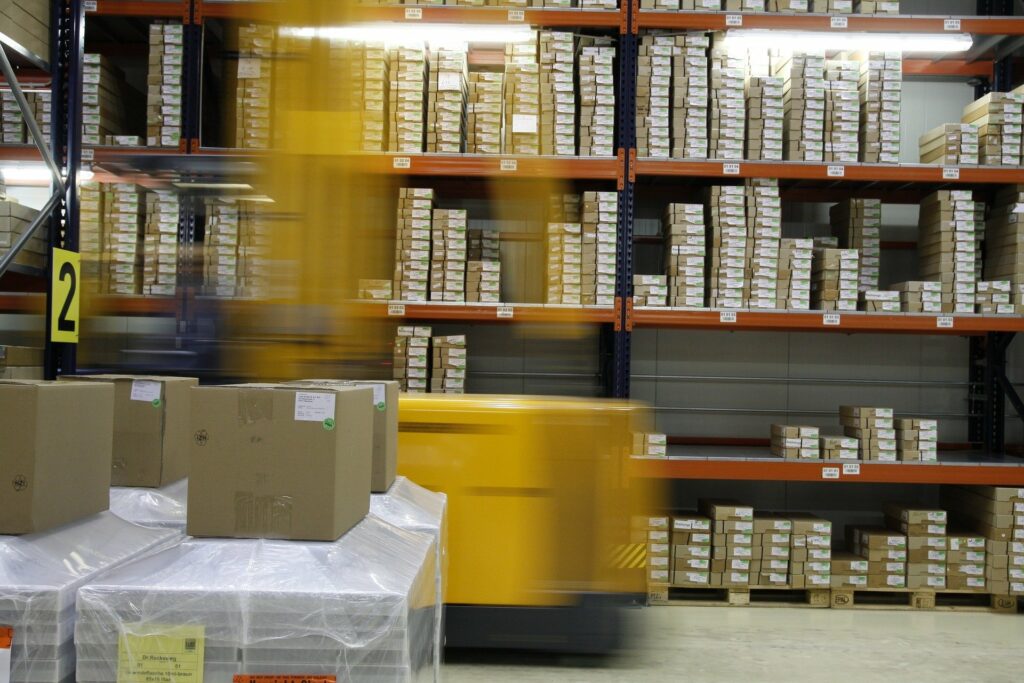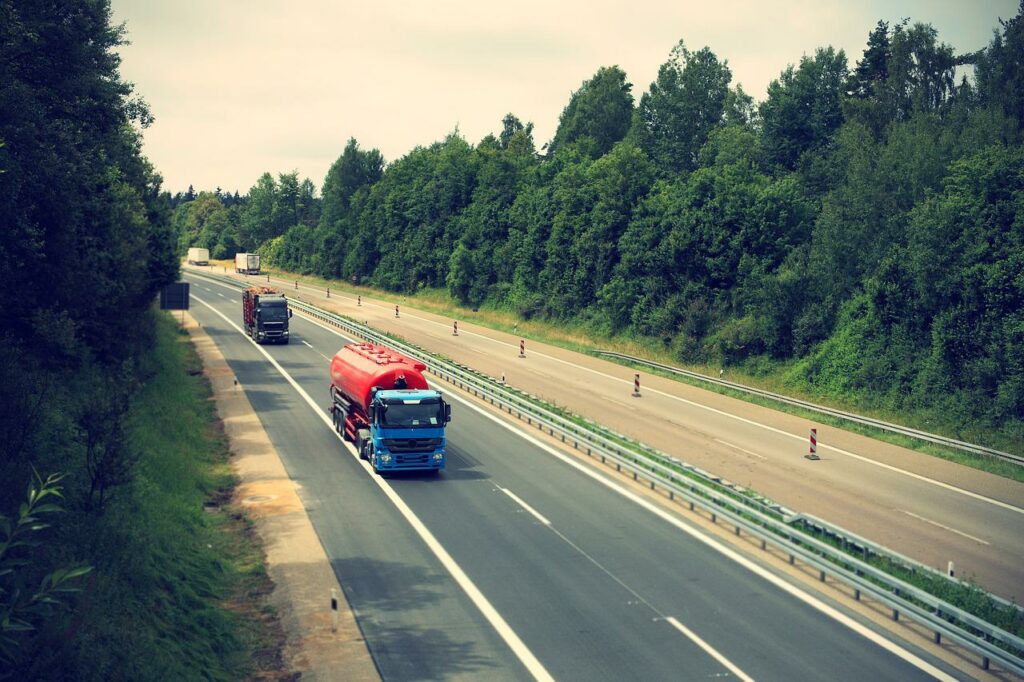Si quieres optimizar las inversiones en logística de tu empresa, es imprescindible que cuentes con un buen diseño de rutas de transporte y distribución. La planificación de rutas en logística te permitirá mejorar la secuencia de paradas, considerando el tipo de carga, los métodos de transporte, el tráfico, el cliente y la zona.
En este artículo te explicamos cómo optimizar las rutas de transporte de manera eficiente utilizando sistemas de planificación de rutas.
Fundamentos de la planificación de rutas
Los transportistas pueden realizar rutas de corta y larga distancia. En rutas de corta distancia suelen usar el camión o el ferrocarril como métodos de transporte, mientras que en las de larga distancia pueden utilizar el transporte marítimo o aéreo. En ambos tipos de rutas, existen dificultades de carga y manipulación de materiales, pero sobre todo puede llegar a ser muy complicado conseguir trazar una ruta óptima de reparto.
Las empresas de logística tienden a utilizar herramientas de inteligencia geográfica para diseñar rutas dinámicas de transporte. Estos planificadores de rutas logísticas tienen el objetivo de seleccionar los mejores itinerarios con la finalidad de optimizar el tiempo y los costes de la empresa. Es decir, eligen el itinerario más eficiente o el de menor costo para garantizar el mínimo reposicionamiento de vehículos y personal.
¿Cómo se optimizan las rutas de manera eficiente?
En la planificación de rutas de transporte, deben considerarse distintos elementos que repercutirán directamente en el diseño óptimo de estas. Entre los principales encontramos:
- Carreteras: Hay que tener en cuenta la tipología de carretera, las topografías, los niveles de tráfico y zonas de tránsito, las distancias y los límites de acceso.
- Vehículos: Cada vehículo puede tener diferentes atributos, como la capacidad de volumen o peso, los tiempos de carga, el coste por milla y las limitaciones del vehículo, es decir, su velocidad.
- Mercancía: Según los productos del pedido, considerar características como la cantidad, el peso, el volumen y la fragilidad.
Una vez tenemos en cuenta todos estos elementos, hay múltiples formas de planificar una ruta. Depende de a qué se dedique tu empresa y de cuáles sean sus necesidades. A continuación enumeramos algunos de los métodos más usados en la actualidad:
- Manual: Si decides elaborar tu ruta de forma manual, necesitarás una cantidad de tiempo considerable para analizar, preparar y compartir las indicaciones del itinerario de tus conductores.
También deberás tener en cuenta otros factores esenciales como el tráfico, el tiempo, las obras, la satisfacción de los clientes y la disponibilidad.
Si tienes muchos clientes y varios conductores, te llevará mucho tiempo.

- Excel: Muchas empresas descargan, a través de los sistemas CRM, una hoja Excel con las direcciones de entrega y la entregan como plan de ruta a sus conductores. Sin embargo, la optimización eficiente de las rutas no se produce en Excel y tampoco cuenta con un mapa visual.
- Google Maps: La primera herramienta que nos viene a la mente a la hora de planificar rutas es Google Maps. Pero, por desgracia, estas herramientas ofrecen funciones adicionales limitadas, y además no posibilitan la optimización de rutas.
Este planificador de rutas de conducción te ayudará a obtener un mapa, un resumen de tu viaje por carretera y las instrucciones de conducción (o itinerarios) a múltiples lugares en el mapa por satélite o vista híbrida.
- Planificador de rutas logísticas: Hoy en día existen muchos sistemas de planificación de rutas en el mercado que usan la inteligencia geográfica para optimizar las rutas logísticas. Como usuario, dependerá de ti explorar las características que se ajusten a las necesidades específicas de tu empresa.
Los sistemas de planificación como Vonzu te ayudarán a encontrar los itinerarios más efectivos para tus conductores y te proporcionarán los resúmenes de ruta, la distancia recorrida, los itinerarios/direcciones de conducción y las opciones de itinerario que pueden aplicarse mejor a tu empresa y sus necesidades.
Beneficios de planificar las rutas
La planificación de itinerarios de transporte aportará muchos beneficios a tu empresa, entre ellos destacan:
- Reducir el tiempo de trayecto: La planificación de rutas te ayudará a trazar itinerarios estratégicos que optimizarán el tiempo de transporte. Esto permitirá a tu equipo realizar más entregas en menor tiempo, teniendo en cuenta la urgencia y la distancia de cada una de ellas.

- Mejorar la relación con tu cliente: Cuanto más sofisticada sea tu cadena de suministro, menos tiempo dedicarás a la entrega de productos al cliente. Esta será una ventaja competitiva, ya que las entregas rápidas se han convertido en el servicio mínimo esperado por el cliente.
- Reducir los costes: Menos paradas innecesarias siempre significarán ahorro en combustible, vehículos y personal. Los sistemas de planificación de rutas te ayudarán a entender qué acciones de la cadena de entrega son las más adecuadas.
- Reducir los residuos: Para muchas empresas, una buena política de preservación del medio ambiente es importante. La planificación de las rutas de transporte te ayudará a reducir al mínimo las emisiones nocivas y evitar el riesgo de perjudicar las relaciones con clientes de consciencia ecológica.
- Hacer un seguimiento de las entregas en tiempo real: Esta información supondrá una ventaja competitiva en tu negocio, especialmente para tu servicio de atención al cliente, que ayudará a los clientes a realizar el seguimiento de sus paquetes.
- Facilidad en la planificación de rutas: Los sistemas de planificación a través de la inteligencia geográfica te permitirán evaluar todas las opciones de ruta dependiendo el coste y la autonomía de los vehículos.
Conclusión
En conclusión, la mejor opción a la hora de planificar un itinerario de transporte es utilizar un sistema de optimización de rutas. Los itinerarios se optimizarán en cuestión de segundos, pudiendo revisar dichos itinerarios y planificar las próximas rutas de entrega disponibles. No sólo ahorrarás tiempo sino que podrás entregar más pedidos economizando el tiempo de tus conductores.



